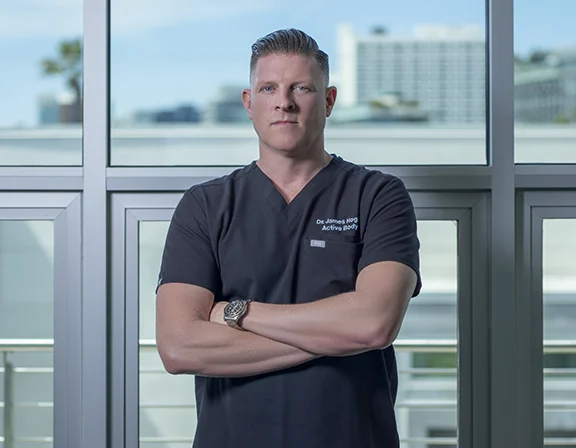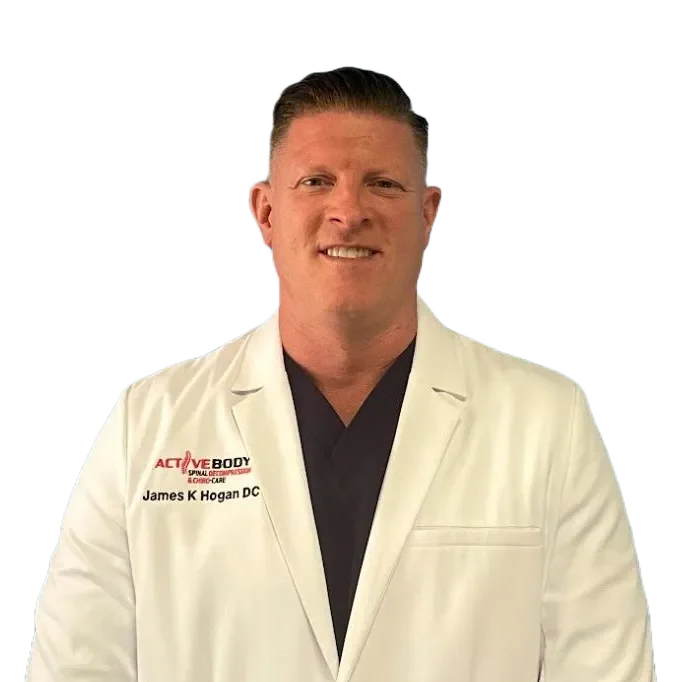
Herniated Disc Treatment in Culver City
A herniated disc—also referred to as a slipped, bulged, or ruptured disc—occurs when the soft inner portion of a spinal disc pushes through a tear in the outer layer. This can place pressure on nearby nerves, resulting in pain, tingling, numbness, or weakness in the affected area.At Active Body Chiropractic Culver City, our team offers personalized treatment plans for lumbar disc herniation, cervical disc herniation, and general spinal disc injuries—without invasive procedures or medications.
Early intervention often leads to faster recovery and fewer complications, so understanding how your spine works is the first step toward healing.
Call (310) 800‑1320 or book online to schedule an evaluation.
Effective Relief and Recovery Through Chiropractic Care
A spinal disc has a gel-like core (nucleus pulposus) and a tougher outer ring (annulus fibrosus). When the ring weakens—often from age, repeated strain, or sudden injury—the core can bulge or slip out of place. This herniation can irritate adjacent nerves, causing pain that may radiate down the legs (sciatica) or arms.
Why discs herniate:
- Wear and tear: Discs gradually lose hydration and elasticity with age.
- Sudden moves: Lifting heavy objects without proper form or abrupt twists.
- Weak core muscles: Insufficient support increases stress on discs.
Symptoms of a Herniated Disc
Patients often don’t realize their symptoms are disc-related until the pain becomes severe. Common signs include:
| Symptom | How it feels | Why it happens |
| Sharp back or leg pain | Sudden, stabbing sensation when you move | Herniated material presses on spinal nerves |
| Tingling or numbness | Pins-and-needles in arms or legs | Nerve irritation from disc protrusion |
| Muscle weakness | Arms or legs feel unsteady | Nerve signals are disrupted |
| Stiffness | Difficulty bending or turning | Inflammation and muscle guarding |
Early evaluation can help prevent lasting issues and improve outcomes.
Types of Herniated Discs
Herniated discs are generally categorized based on their location:
- Cervical Disc Herniation – Occurs in the neck and may affect the shoulders, arms, or hands.
- Thoracic Disc Herniation – Affects the upper and mid-back; less common but serious.
- Lumbar Disc Herniation – The most frequent type, causing lower back pain and leg symptoms.
Common Causes of a Herniated Disc
Several lifestyle and occupational factors can contribute to disc herniation:
- Age and degeneration: Discs lose water content over time, making them more prone to tears.
- Repetitive strain: Jobs or activities involving frequent bending, lifting, or twisting.
- Poor posture: Slouching while sitting or standing places uneven pressure on discs.
- Sedentary lifestyle: Lack of movement weakens core muscles and spinal support.
- Trauma or injury: Falls, car accidents, or sports impacts that jar the spine.
Risks of Ignoring a Slipped Disc
Ignoring a herniated disc may lead to:
- Chronic nerve pain: Ongoing inflammation can damage nerves over time.
- Reduced mobility: Stiffness and weakness can limit daily activities.
- Secondary disc issues: Adjacent discs may degenerate faster under extra load.
- Muscle atrophy: Underused muscles shrink and lose strength.
Addressing symptoms early reduces the risk of surgery and long-term disability.
Temporary Relief Options
While these methods don’t address the root issue, they may offer short-term relief:
- Apply a heating pad or cold pack to reduce inflammation
- Gentle stretching can ease stiffness
- Avoid prolonged sitting or bending to prevent worsening
- Use a supportive chair or lumbar pillow
- Rest and modify activities to limit stress on the spine
Herniated Disc Chiropractic Treatment in Culver City & Hawthorne
At Active Body Chiropractic Culver City, we create a step-by-step plan that may include:
| Approach | What happens | Why it helps |
| Chiropractic adjustments | Manual realignment of spinal segments | Reduces nerve irritation and pressure |
| Gentle traction | Controlled stretching of the spine | Creates space for the disc to retract |
| Targeted exercises | Guided movements to strengthen core and back | Improves stability and prevents re-injury |
| Soft-tissue techniques | Massage and instrument-assisted releases | Loosens tight muscles and scar tissue |
| Posture coaching | Personalized advice for sitting, lifting, and sleeping | Maintains proper alignment between visits |
Many patients come in expecting surgery or medication but leave feeling realigned and relieved—often within just a few visits.
Does Medical Insurance Cover Herniated Disc Care?
Yes. Most insurance plans cover chiropractic care for herniated or bulging discs. Call our office to verify your benefits and understand your options.
How Active Body Chiropractic Culver City Helps with Herniated Discs in Culver City & Hawthorne
With offices in Culver City and Hawthorne, Active Body Chiropractic Culver City offers expert care tailored to each disc-related case. Dr. Hogan uses hands-on diagnostics, real-time mobility testing, and gentle chiropractic adjustments to identify and treat the root issue—not just the symptoms.
We proudly serve patients throughout West Los Angeles, including Inglewood, El Segundo, and surrounding areas. Ready to restore your spinal health? Book your consultation today.
Book An Appointment
You can book your appointment using the scheduling tool below or by calling us at (310) 800-1320.
Frequently asked questions
Can I get disability for herniated discs?
In severe cases, where mobility or nerve function is greatly impaired, a herniated disc may qualify for disability. Documentation from imaging and a specialist is typically required.
Are chiropractors in Culver City and Hawthorne safe for herniated discs?
Yes. Chiropractic care is a safe, non-invasive alternative to surgery. Our treatments are tailored to avoid any stress on vulnerable discs.
What is the fastest way to heal a herniated disc?
Combining chiropractic care, gentle stretching, core strengthening, and rest often provides the quickest recovery without surgery.
Can you still walk with a herniated disc?
Yes, but you may feel discomfort or weakness. Walking may actually support healing if guided properly.
What activities should you avoid with a herniated disc?
Avoid heavy lifting, bending, twisting, and high-impact sports until cleared by a chiropractor or medical provider.
How long does it take for a disc herniation to heal?
Mild herniations may improve in a few weeks; moderate to severe cases can take several months, especially without proper care.
Can I make a herniated disc worse?
Yes—ignoring symptoms or continuing repetitive strain can lead to worsening symptoms and long-term complications.
Can I go to the gym with a herniated disc?
Yes, but you must modify your workouts. Avoid spinal loading and consult a chiropractor for safe exercise recommendations.
How long does it take a herniated disc to heal without surgery?
Most herniated discs can heal in 6–12 weeks with proper non-invasive care, including chiropractic adjustments and physical therapy.

